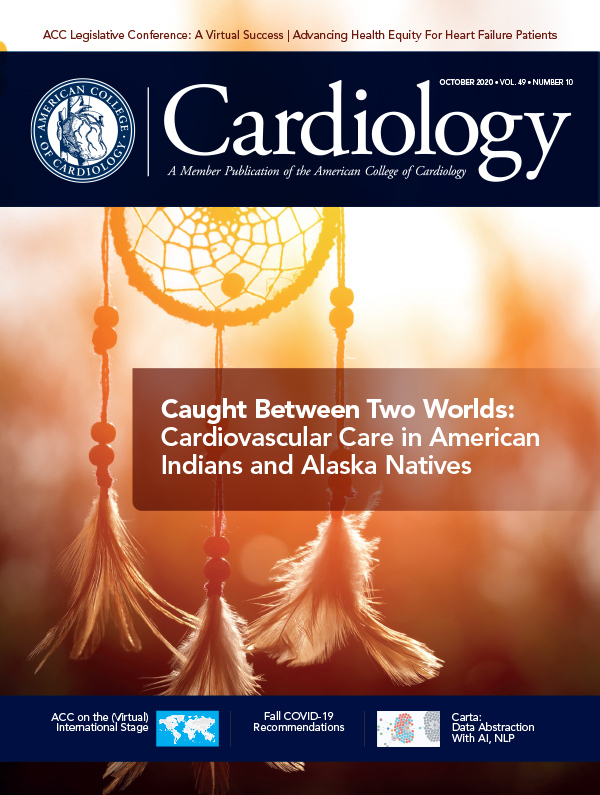Business of Medicine | Taking Care of Patients’ Hearts During Cancer Treatment: Collaborative Oncology and Cardiovascular Care

For many oncology patients, comorbid cardiovascular disease and newly developed cardiac conditions add complexity to their cancer treatment. Among all of the practices Archway Health works within Medicare's Oncology Care Model (OCM), heart failure is one of the leading causes of inpatient admissions – second only to sepsis – for patients undergoing chemotherapy. Admissions for arrhythmia occur frequently as well.
Addressing the cardiovascular health of the oncology patient population equates to better, more thorough care management of the population, and can help avoid costly and potentially preventable cardiovascular-related admissions for patients already navigating the challenges of an oncology diagnosis.
Findings by Archway Health
Archway aggregated Medicare Part A, B and D claims data for all OCM-attributed patients among five large, independent cardiology practices located in five different states across the country; claims data were from the period of July 1, 2016 to Dec. 31, 2018.
Within this data set, 25% of patients had at least one acute admission during a six-month episode of care. On average, if an OCM patient was admitted during the episode for any reason, she/he was admitted about 2.5 times during the episode. Of these admissions, about 13% had a cardiac MS-DRG. More striking, however, is that upwards of 70% of beneficiaries who were admitted to the inpatient setting had at least one co-occurring cardiovascular diagnosis, whether it drove the admission or not, demonstrating the importance of monitoring and ensuring adequate treatment for cardiovascular comorbidities.
Archway also evaluated the occurrence of cardiac comorbidities by cancer type. Breast cancer, for example, is the highest volume cancer type in the OCM. Among the breast cancer population within this data set, 10-15% of all acute inpatient admissions had a cardiac MS-DRG. When accounting for cardiac comorbidities, a fuller picture of the burden of cardiovascular disease again emerged: 80% of admitted breast cancer patients had at least one cardiovascular-related comorbidity.
Inpatient admissions are costly in the literal and figurative sense, exposing patients to the dangers of hospitalization and participants to financial risk. The average target price for low-risk breast cancer is about $6,200 per episode in OCM, and about $39,000 per episode for high-risk breast cancer. Target prices vary widely according to associated risk factors. Across the five practices in our analysis, breast cancer episodes with cardiac admissions generated $15,000 in losses, on average. Data indicate two high-level drivers of cardiac admissions among breast cancer patients.
First is the use of cardiotoxic aromatase inhibitor pharmaceuticals that, when used, were associated with between 50-70% of cardiac admissions. The second appears to be suboptimal post-acute care placement and utilization across settings including skilled nursing facilities, home health agencies, and inpatient rehabilitation facilities/long-term care hospitals. Both drivers of hospitalizations point to the need for strong care coordination practices to ensure proper care and to avoid the exacerbation of existing conditions.
Archway and MedAxiom: Partnering to Advance Care
In light of these findings, Archway leveraged its long-term partnership with MedAxiom, an ACC company and the premier source for cardiovascular organizational performance solutions, to provide strategic guidance for developing collaborative oncology and cardiovascular care to patients.
Ginger Biesbrock, PA-C, MPH, MPAS, AACC, MedAxiom's executive vice president of care transformation, shared the following guidance with OCM practices, shaped by her background in readmission reduction, multidisciplinary clinical development and chronic disease management.
Collaborative Oncology and Cardiovascular Care
The association between oncology and cardiovascular disease can fall into three categories:
- Oncology patients with risk factors for heart failure, including a history of hypertension or other cardiovascular conditions, as well as those at risk due to cardiotoxic elements of their oncology treatment or the malignancy itself.
- Oncology patients with existing cardiovascular comorbidities, such as heart failure, coronary artery disease, or prior myocardial infarction who are under the care of a cardiovascular specialist and now have an oncology diagnosis as well.
- Oncology patients who develop cardiovascular conditions during their oncology treatment and are now in need of cardiovascular care.
As such, a significant portion of an oncology practice's patients will require monitoring for and surveillance of cardiovascular disease and coordinated access to cardiology care to prevent worsening conditions.
Oncology patients who develop cardiovascular symptoms during oncology treatment can develop those symptoms despite no history or management of cardiovascular disease, or they can be patients with a prior cardiovascular diagnosis who are now experiencing an exacerbation, or they can be patients who are now experiencing cardiovascular symptoms related to cardiotoxic chemotherapy or radiation or from a complication with their malignancy.
Oncology patients with preexisting cardiovascular disease can often have an exacerbation of their condition if their treatment for oncology or its side effects result in inpatient hospital stays or sepsis management that requires discontinuation of their cardiovascular medication or if their cardiovascular medication conflicts with their current oncology management.
Co-managing both conditions in a patient is imperative to ensure the treatment of one does not lead to a deterioration of the other, causing further, and potentially more complex, issues for the patient.
Cardiovascular Care Pathway Design
Ensuring proper care for oncology patients' cardiovascular health requires planning at many levels of the practice.
Organizational: Oncologists and cardiologists will need to engage in an interdisciplinary relationship that supports a combined oncology/cardiovascular treatment strategy. Within this relationship, oncologists and cardiovascular professionals work together to deliver cardiovascular care to patients undergoing cancer care and co-manage both conditions.
Ancillary service offerings and care coordination also can be integrated into the practice to help with management of the patient population in the ambulatory setting before inpatient care is needed. This requires a reliable and consistent means of communication between the oncologist and the cardiovascular professional, protocols for ensuring timely access to cardiac care for oncology patients, and an established relationship through which both care teams can treat the patient collaboratively and effectively.
Clinical: It is important to develop clinical care and care coordination strategies to determine:
- How to identify patients at risk for cardiotoxicity and cardio-oncology conditions and in need of proper monitoring.
- How to partner for surveillance of at-risk patients.
- How to fast-track any patients for care when complications develop.
Effective care coordination, transition and discharge protocols must be in place to manage patients as they transition through different care settings, along with ensuring that adjustments in treatment for the stabilization of one condition don't increase the patient's risk for developing complications in other conditions.
Discharge plans and transitions of care should include medication reconciliation, patient education, follow-up plans, transfer of information, and care plans and case management.
Operational: Practices must determine the care delivery model they will employ to deliver this care to their patients. Some practices integrate cardiologists into the oncology practice or have cardiologists offer clinics multiple times a month at the oncology practice, establishing a truly multidisciplinary clinic through which a patient can have both of their conditions monitored and treated.
Other oncology practices develop close working relationships with local cardiology practices through which they can routinely engage in physician-to-physician communication and collaboration and obtain timely access to cardiology care for their patients.
In this model, the practices will need to determine if they share and can communicate through a common electronic medical record; if not, they must determine how they will communicate efficiently and consistently. Other practices utilize nurse practitioners and other advanced practice providers with good experience in cardiovascular management who can help with collaboration and communication between the oncology and cardiology practices while treating the patient.
While there are different methods for offering collaborative and interdisciplinary care for oncology patients, they all rely on having open and consistent communication between the oncologist and cardiologist and a method of providing oncology patients timely access to cardiovascular care with someone who can communicate regularly with the oncologist about the patient's condition and care needs.
For oncology practices that do not have these relationships established, outreach to and conversations with local cardiologists needs to take place to solidify care pathways and connections and prevent avoidable clinical and financial risk for oncology patients.
Visit ArchwayHealth.com and MedAxiom.com for more data insights and information on collaborative oncology and cardiovascular care.
Clinical Topics: Cardio-Oncology, Cardiovascular Care Team, Atherosclerotic Disease (CAD/PAD)
Keywords: ACC Publications, Cardiology Magazine, Medication Reconciliation, Patient Discharge, Patient Transfer, Nurse Practitioners, Cardiology, Neoplasms, Breast Neoplasms, Home Care Agencies, Episode of Care, Long-Term Care, Patient Readmission, Medicare, Length of Stay, Coronary Artery Disease, Aromatase, Cardiovascular Diseases, Risk Factors, Subacute Care, Skilled Nursing Facilities, Treatment Outcome, Inpatients, Follow-Up Studies, Case Management, Cardiotoxicity, Electronic Health Records
< Back to Listings



